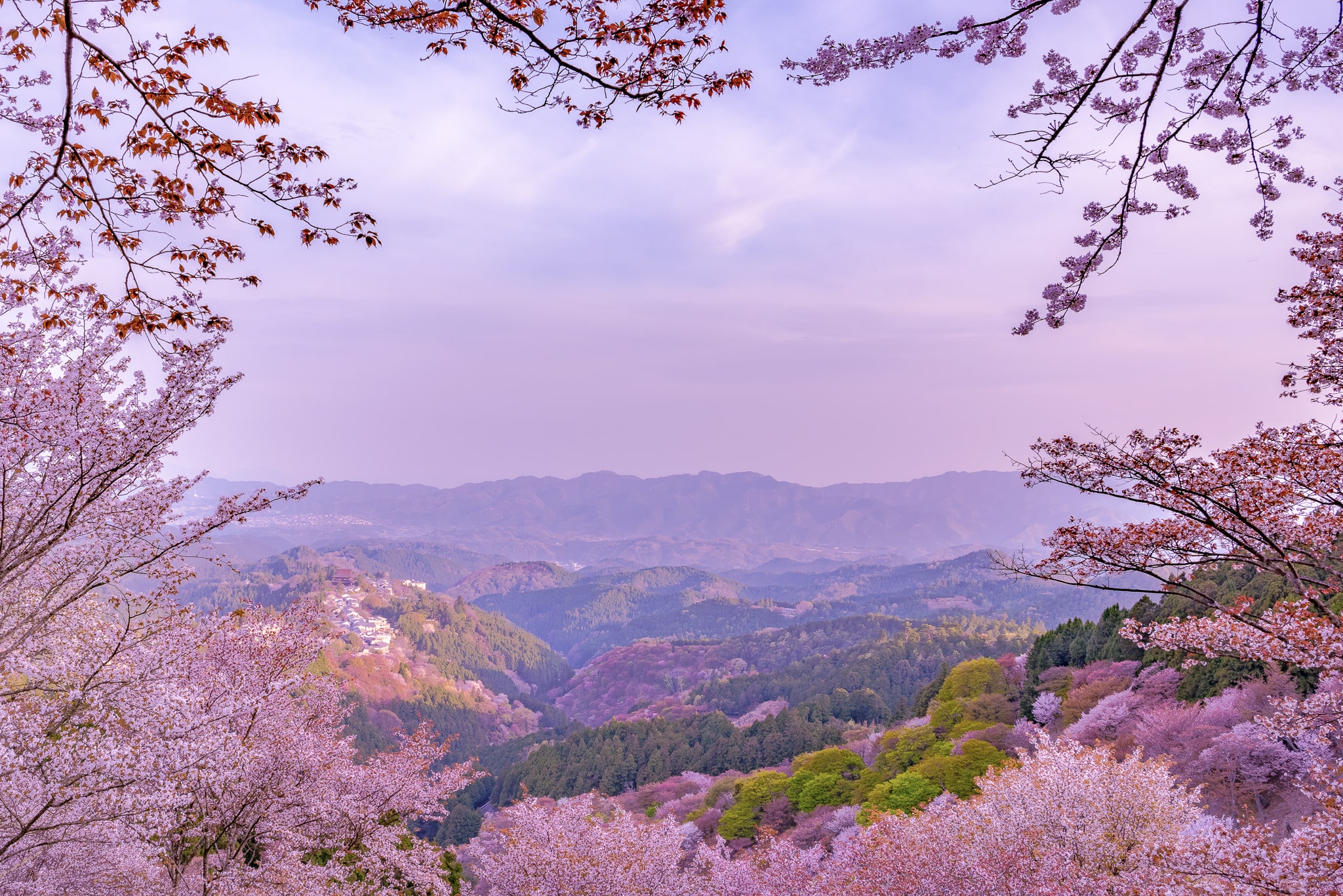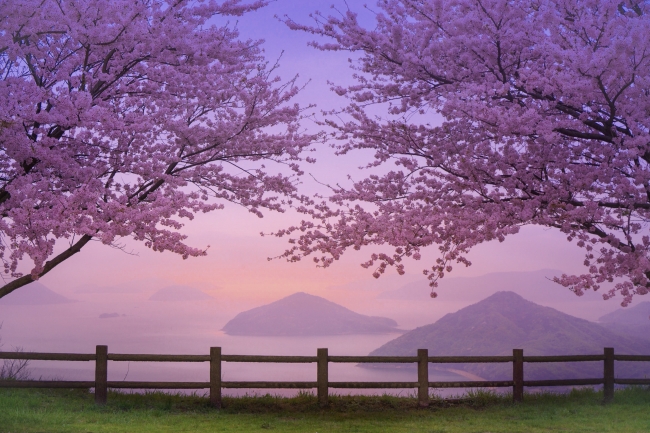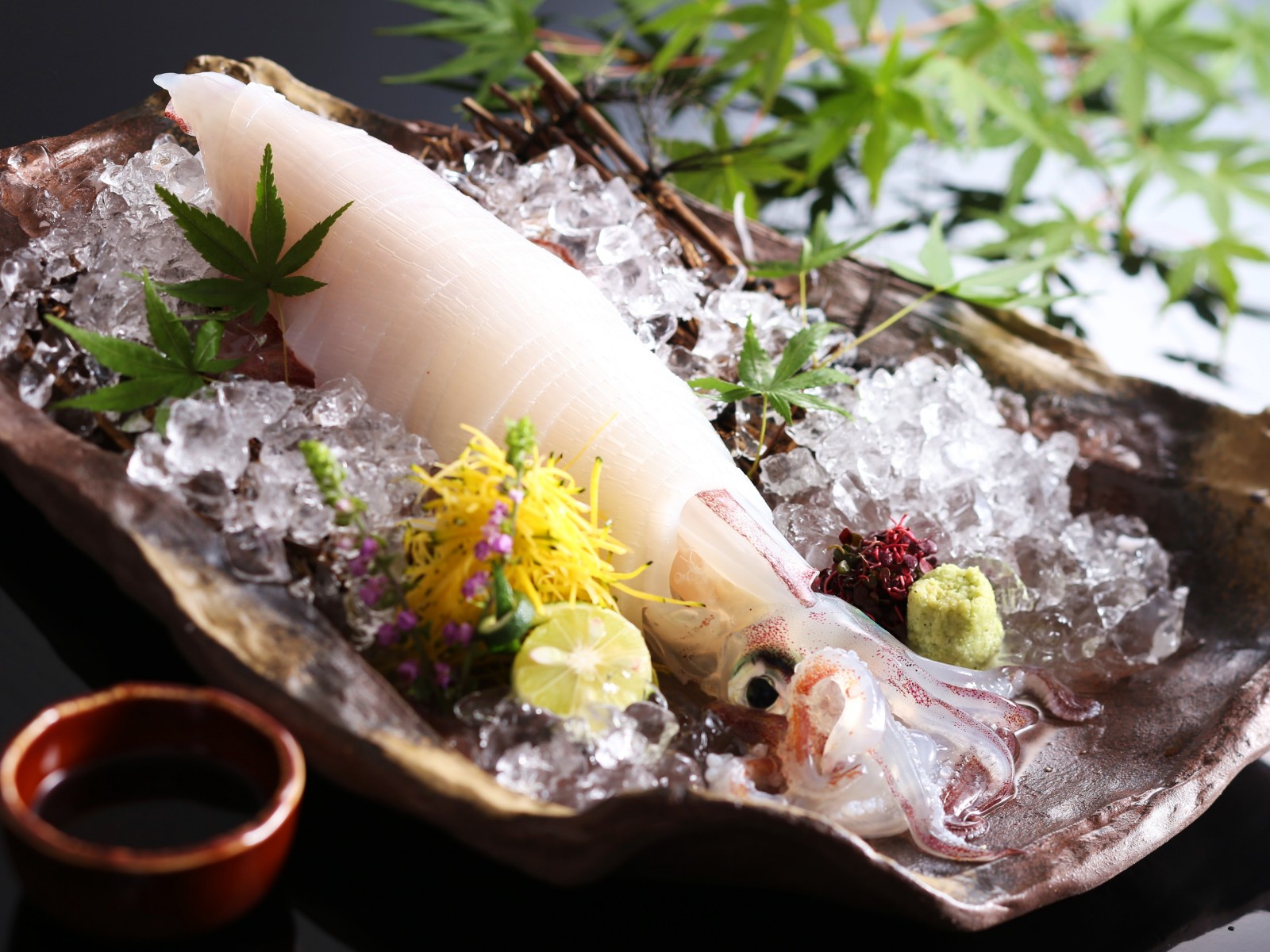Cherry blossoms that color Mt. Yoshino on one side. The number is about 30,000. On a scale that is unparalleled in the world, it is a famous place among famous places that have been loved as flower spots since ancient times.
In addition, the whole Yoshino mountain is registered as a world heritage “Kii Mountain Range Sacred Sites and Pilgrimage Routes”.
-
Yoshino-cho, Yoshino-cho, Nara, Japan
From Kyoto: About 1 hour and 40 minutes by Kintetsu Limited Express (transfer to Kashihara Jingumae)
From Osaka: About 1 hour and 15 minutes by Kintetsu Limited Express (directly from Osaka Abenobashi)
From Nagoya: About 2 hours and 55 minutes by Kintetsu Limited Express (transfer to Yamato Yagi / Kashihara Jingumae)
-
One thousand views at a glance!

Yoshinoyama is a colony of about 200 species, mainly from ancient species, mainly from white cherry trees. The luxury of being able to see the innumerable cherry blossoms at a glance has long been described as “one thousand at a glance”.

Early in the morning, the cherry blossoms nestled in Mt. Yoshino in the morning mist. You can enjoy the unique charm of cherry blossoms only in Yamanaka.
There are four areas: bottom, middle, top and back

Yoshinoyama is divided into four places: bottom, middle, top and back, each with its own highlights.
From mid-April, flowering progresses from lower to middle to upper to Oku Senbon, and you can enjoy cherry blossom viewing for a long time.
Highlights of the Shimosenbon area

Kinminesanji Temple seen from Yoshimizu Shrine
The lower Senbon area is about 230m to 350m above sea level. What you definitely want to visit is the Kinminesanji Temple, a world heritage site. It is said that the cherry blossoms at Mt. Yoshino began when the priest at Kinmineyama Temple planted seedlings.
There are many highlights, such as the Shimo-Senhonhon Observatory and the Zao Hall registered as a World Heritage Site. Within a 15-minute walk from Shimo-Senhon Parking Lot, it is easily accessible.
Highlights of the Nakasenbon area

Nakasen from the Yoshimizu Shrine
The Nakasenbon area has an altitude of 350m to 370m. One of the thousand cherry blossoms at Mt. Yoshino is Nakasen, which is viewed from Yoshimizu Shrine.
There is a bus from Kintetsu Yoshino Station to Naka-Senhon Park, the top of the Naka-Sen-hon area. This is an area you definitely want to visit.
Kamisen-Oku Senbon area

Large panorama from Kamisenbon area
The Kamisenbon area is located at an altitude of about 370m to 600m, and the Oku Senbon area is at an altitude of 600m to 750m. The magnificent panorama from the Hanayakura Observatory is breathtaking.
About an hour on foot from the entrance of Mt. Yoshino, Shimosenbon Parking Lot. Bus access is limited in the afternoon, so we recommend going in the morning.
The number of cherry blossoms in the Okusen area is reduced, but the quietly standing Yamazakura is also exciting.
It is full of attractions, such as Yoshitsune’s Hidden Tower, a World Heritage-listed Moisture Shrine and Kinmine Shrine, and has recently attracted attention as a power spot.
Yoshinoyama is a place where you can meet superb views that you will never forget. It is a cherry blossom spot that you want to visit at least once.















































